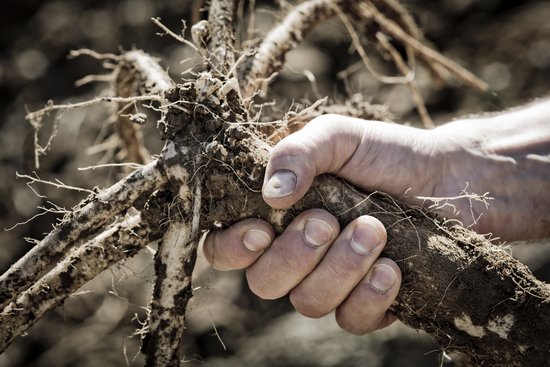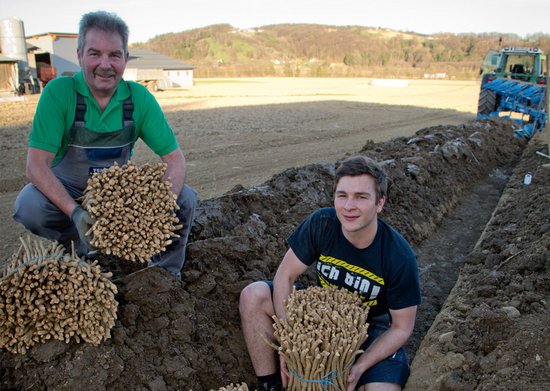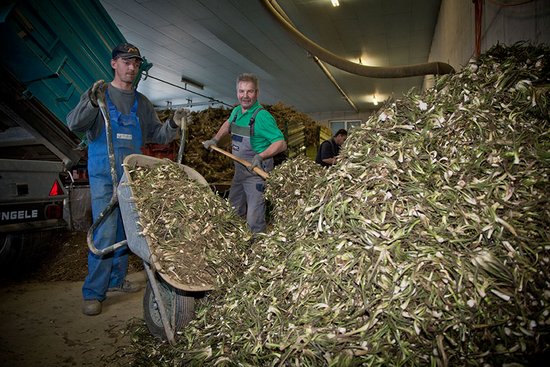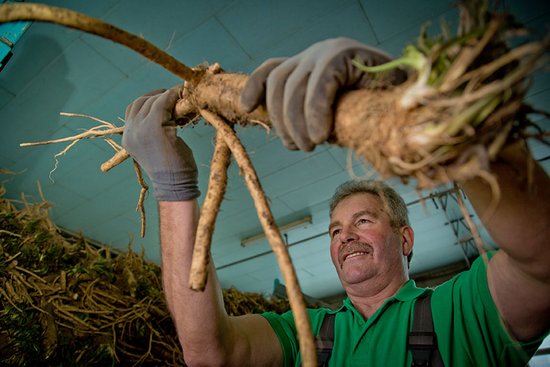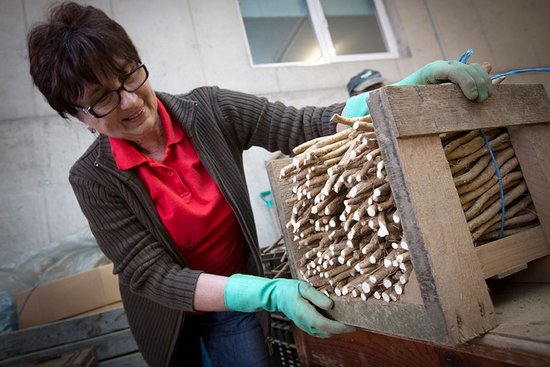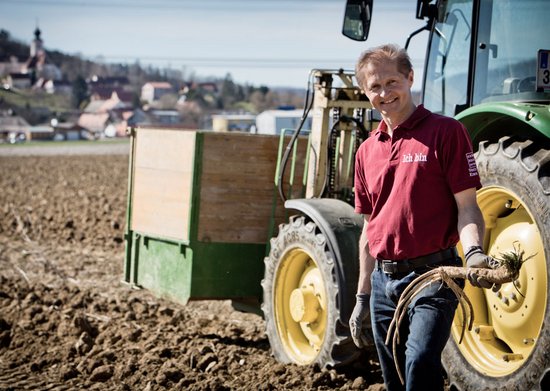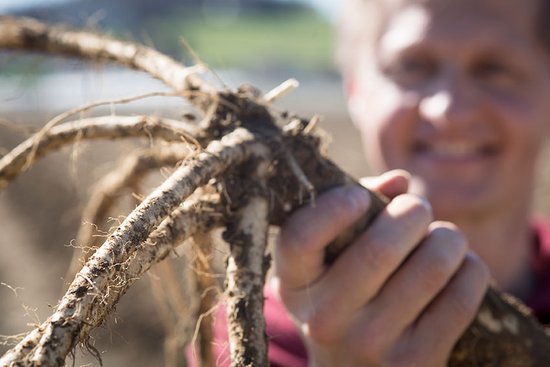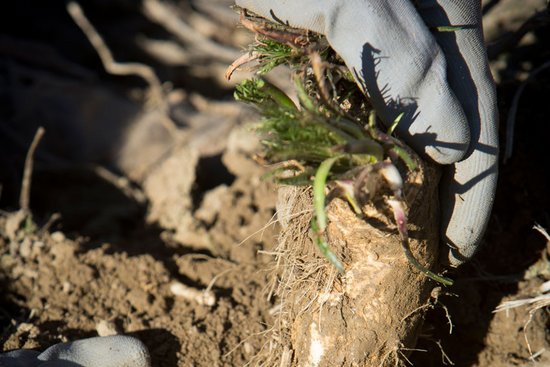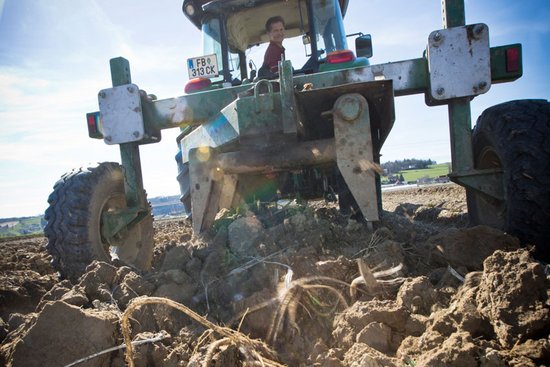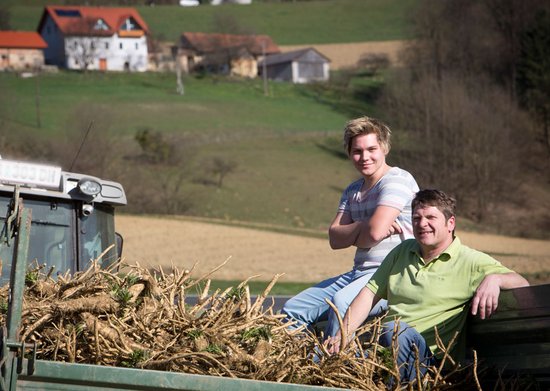SteirerKren
The farmers.
Our horseradish farmers tend their fields with special devotion and a great deal of knowledge about our Styrian horseradish. Years of experience and only the best climate and soil conditions make their horseradish unmistakable and unique in flavour. Styrian horseradish PGI is a demanding, labour-intensive speciality crop that requires countless tasks that can only be carried out by hand.
For our farmers, work continues after the harvest. The roots are cleaned and sorted according to size and quality. The shoots at the ends of the horseradish roots, also called “saplings”, are kept in sand and serve as the seedlings for the next exciting and culinary horseradish year.
Three of the styrian farmers who work for us talk about their everyday life in horseradish farming and of their special affection for horseradish.
Josef Fasswald, Mettersdorf
"Horseradish is a bit like a drug: if you eat a lot of horseradish, you just need that spiciness in your nose. I couldn’t imagine life without horseradish."
Home: Mettersdorf
Features of the farming region: Features of the farming region: Mettersdorf am Sassbach is a market town with around 1,300 inhabitants. Interesting sights in Mettersdorf include the old Roman settlement “Villa Rustica” and the bear sculpture in the town centre.
Area under cultivation: 8 hectares
Cultivation for: more than 40 years (in the second generation)
Franz Tappauf, Studenzen
"I eat horseradish for my tea almost every day: with meat, with cheese and also with runner bean salad. I also like horseradish soup or Apfelkren (apple and horseradish sauce) with roast pork."
Home: Studenzen
Features of the farming region: The village name is of Slavic origin (studenica) and means something like “cold stream”. The small community is in the south-eastern region of Styria, approximately 26km east of the state capital Graz.
Area under cultivation: 3 hectares
Cultivation for: more than 40 years (in the second generation)
Josef Trummer, Gnas
"It’s not for nothing that horseradish known as the ‘penicillin of the garden’. It strengthens the immune system and is especially good for you. I’m fascinated by its unique flavour, which comes into its own in, for example, Fritattensuppe (pancakes served in broth)."
Home: Gnas
Features of the farming region: The market town of Gnas is in the east Styrian hills. The initial design of the Gnas coat of arms is unknown because the documents were destroyed in a fire. The Holy Roman king and later emperor Ferdinand I granted the princely market a new coat of arms on 19th January 1552.
Area under cultivation: 2 hectares
Cultivation for: 6 years
